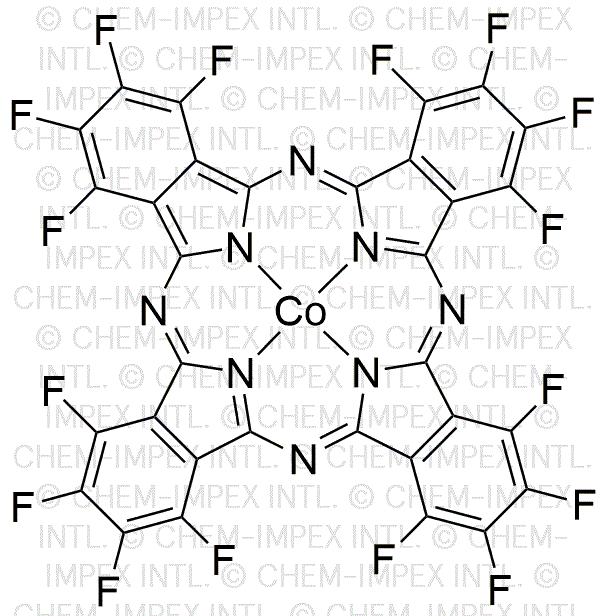Cobalt(II) 1,2,3,4,8,9,10,11,15,16,17,18,22,23,24,25-hexadeca(fluoro)phthalocyanine is widely utilized in research focused on:
- Photovoltaic Cells: This compound is used in the development of advanced solar cells, enhancing light absorption and energy conversion efficiency, which is crucial for renewable energy technologies.
- Catalysis: Its unique structure allows it to serve as an efficient catalyst in chemical reactions, particularly in organic synthesis, improving reaction rates and yields.
- Biomedical Applications: It is explored for drug delivery systems due to its ability to encapsulate therapeutic agents, providing targeted treatment options in cancer therapy.
- Colorants and Dyes: The compound is employed in the production of high-performance pigments for coatings and plastics, offering excellent stability and vivid coloration.
- Environmental Remediation: It is being researched for its potential in removing pollutants from water sources, contributing to cleaner environments and sustainable practices.
General Information
Properties
Safety and Regulations
Applications
Cobalt(II) 1,2,3,4,8,9,10,11,15,16,17,18,22,23,24,25-hexadeca(fluoro)phthalocyanine is widely utilized in research focused on:
- Photovoltaic Cells: This compound is used in the development of advanced solar cells, enhancing light absorption and energy conversion efficiency, which is crucial for renewable energy technologies.
- Catalysis: Its unique structure allows it to serve as an efficient catalyst in chemical reactions, particularly in organic synthesis, improving reaction rates and yields.
- Biomedical Applications: It is explored for drug delivery systems due to its ability to encapsulate therapeutic agents, providing targeted treatment options in cancer therapy.
- Colorants and Dyes: The compound is employed in the production of high-performance pigments for coatings and plastics, offering excellent stability and vivid coloration.
- Environmental Remediation: It is being researched for its potential in removing pollutants from water sources, contributing to cleaner environments and sustainable practices.
Documents
Safety Data Sheets (SDS)
The SDS provides comprehensive safety information on handling, storage, and disposal of the product.
Product Specification (PS)
The PS provides a comprehensive breakdown of the product’s properties, including chemical composition, physical state, purity, and storage requirements. It also details acceptable quality ranges and the product's intended applications.
Certificates of Analysis (COA)
Search for Certificates of Analysis (COA) by entering the products Lot Number. Lot and Batch Numbers can be found on a product’s label following the words ‘Lot’ or ‘Batch’.
Numéro de catalogue
Numéro de lot/série
Certificates Of Origin (COO)
This COO confirms the country where the product was manufactured, and also details the materials and components used in it and whether it is derived from natural, synthetic, or other specific sources. This certificate may be required for customs, trade, and regulatory compliance.
Numéro de catalogue
Numéro de lot/série
Safety Data Sheets (SDS)
The SDS provides comprehensive safety information on handling, storage, and disposal of the product.
DownloadProduct Specification (PS)
The PS provides a comprehensive breakdown of the product’s properties, including chemical composition, physical state, purity, and storage requirements. It also details acceptable quality ranges and the product's intended applications.
DownloadCertificates of Analysis (COA)
Search for Certificates of Analysis (COA) by entering the products Lot Number. Lot and Batch Numbers can be found on a product’s label following the words ‘Lot’ or ‘Batch’.
Numéro de catalogue
Numéro de lot/série
Certificates Of Origin (COO)
This COO confirms the country where the product was manufactured, and also details the materials and components used in it and whether it is derived from natural, synthetic, or other specific sources. This certificate may be required for customs, trade, and regulatory compliance.


